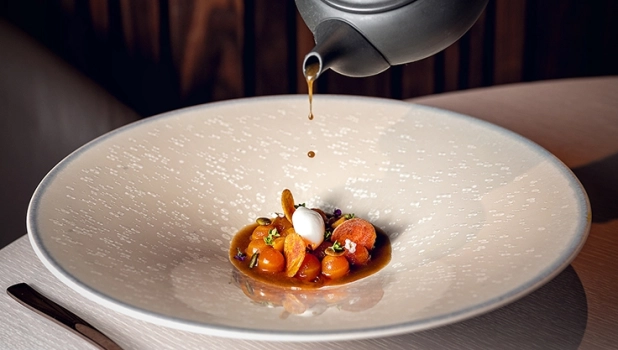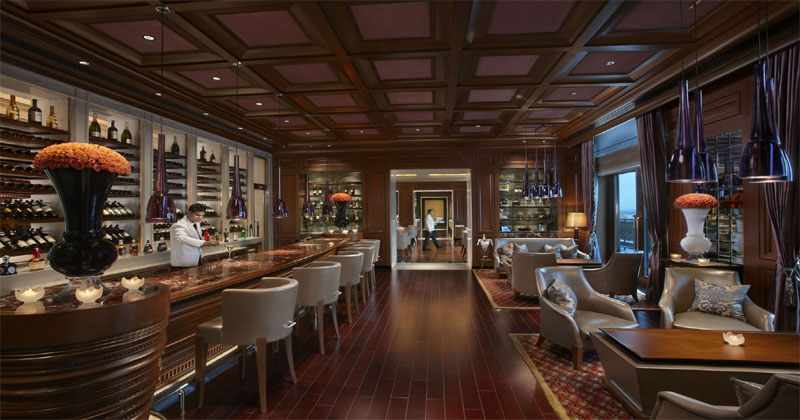A Guide to the World’s Michelin Star Restaurants
Introduction
Michelin Star restaurants are considered some of the best in the world, renowned for their exceptional food, service, and overall dining experience. These restaurants are awarded stars by the Michelin Guide, a prestigious guidebook that has been rating restaurants since the early 1900s. In this guide, we’ll take a look at the history of the Michelin Guide, the criteria used to award stars, and the global distribution of Michelin Star restaurants.
The Michelin Guide was first published in 1900 by the Michelin Tire Company as a way to encourage people to travel by car. The guide included information on where to find good food, lodging, and other services along the way. In 1926, the guide began rating restaurants, using a star system that is still in use today. A single star indicates a “very good” restaurant, while three stars signify “exceptional cuisine, worth a special journey.”
The criteria used to award stars are based on five aspects of a restaurant: the quality of the ingredients used, the mastery of flavor and cooking techniques, the personality of the chef in their cuisine, the value for money, and consistency between visits. The guide’s inspectors are anonymous and pay for their meals. They visit each restaurant multiple times before making a decision on how many stars to award.
There are currently around 3,500 Michelin Star restaurants globally, with the majority located in Europe. France has the highest number of Michelin Star restaurants, with over 600, followed by Japan and Italy. The United States also has a significant number of Michelin Star restaurants, with over 150. However, Michelin Star restaurants can be found in countries all over the world, from Australia to South Africa.
The Different levels of Michelin Stars

The Michelin Guide awards stars at three different levels: one star, two stars, and three stars. Each level represents a different level of dining excellence, and the criteria for each level become increasingly rigorous as the number of stars increases.
- A one-star restaurant is considered “very good” and offers “high quality cooking, worth a stop.” The restaurant should have a menu that “regularly changes” and “uses good quality ingredients.”
- A two-star restaurant is considered “excellent” and offers “excellent cooking, worth a detour.” The restaurant should have “exceptional” ingredients and “expertly crafted” dishes.
- A three-star restaurant is considered “exceptional” and offers “exceptional cuisine, worth a special journey.” The restaurant should have “extraordinary” ingredients, “superbly crafted” dishes, and a “unique personality” in the kitchen.
It’s worth noting that Michelin only awards stars to restaurants that it believes are worth visiting and that not all restaurants are reviewed by the guide. A restaurant that is not recommended by the guide will not receive any stars.
It’s also worth noting that Michelin Stars are not permanent, they are subject to change based on the guide annual review, a restaurant can lose its stars if its quality drops or if a new restaurant surpasses it.
In summary, Michelin Star restaurants are considered some of the best in the world, renowned for their exceptional food, service, and overall dining experience. These restaurants are awarded stars by the Michelin Guide, a prestigious guidebook that has been rating restaurants since the early 1900s.
The guide uses a star system with three different levels: one star, two stars, and three stars, each level represents a different level of dining excellence, and the criteria for each level become increasingly rigorous as the number of stars increases.
The World's Top Michelin Star Restaurants

When it comes to Michelin Star restaurants, the list of top restaurants is always changing as new establishments rise to the top and others fall behind. However, there are a few restaurants that have consistently held three Michelin Stars, considered the highest honor in the culinary world.
One of the most renowned three-star restaurants is El Bulli, located in Catalonia, Spain. The restaurant was run by chef Ferran Adria and was known for its creative and experimental cuisine. It was open for 25 years, and during that time it was awarded three Michelin stars for a record five times.
Another renowned three-star restaurant is Osteria Francescana, located in Modena, Italy. The restaurant is run by chef Massimo Bottura, who is known for his modern take on traditional Italian cuisine. In 2018 and 2019, it was named the best restaurant in the world by World’s 50 Best Restaurants.
In the United States, the French Laundry, located in Napa Valley, California, is one of the most highly-rated Michelin Star restaurants. The restaurant is run by chef Thomas Keller and offers a French-inspired menu that changes daily.
There are also many two-star and one-star restaurants that are considered among the world’s top dining destinations. Some notable examples include:
- Alinea, located in Chicago, Illinois, is known for its modern and experimental cuisine.
- Per Se, located in New York City, New York, offers a French-inspired menu and is run by chef Thomas Keller.
- Eleven Madison Park, located in New York City, New York, offers a contemporary American menu and is known for its exceptional service.
- These are just a few examples of the many Michelin Star restaurants that can be found around the world. To get a sense of the dining experience at these top restaurants, it’s worth reading reviews and looking at photos online.
How to Dine at a Michelin Star Restaurant
Dining at a Michelin Star restaurant can be a once-in-a-lifetime experience, and it’s important to be prepared to make the most of it. Here are a few tips for making a reservation, ordering from the menu, and budgeting for a Michelin Star dining experience.
- Make a reservation well in advance. Many Michelin Star restaurants book up months in advance, so it’s important to plan ahead.
- Dress appropriately. Most Michelin Star restaurants have a dress code, and it’s important to be well-dressed to make a good impression.
- Be open to trying new things. Many Michelin Star restaurants offer unique and experimental dishes, so be prepared to step out of your comfort zone.
- Pair wine with your meal. Many Michelin Star restaurants have extensive wine lists and knowledgeable sommeliers who can help you choose the perfect wine to complement your meal.
- Be prepared to spend a significant amount of money. Michelin Star dining can be expensive, so it’s important to budget accordingly.
- Be mindful of the dining etiquette, such as not taking photos of your food, or being on time for your reservation.
It’s also worth noting that many Michelin Star restaurants offer tasting menus, which are a set of multiple courses that showcase the chef’s best dishes. These can be a great way to experience the full range of a restaurant’s offerings, but they can also be quite expensive. If you’re on a budget, you might want to consider ordering à la carte or opting for a less expensive menu option, such as lunch or brunch.
When it comes to tipping, it’s worth noting that many Michelin Star restaurants include a service charge in the final bill, so you may not need to leave an additional tip. However, if you received exceptional service, it’s always appropriate to leave an additional tip.
Finally, don’t be afraid to ask questions. Many Michelin Star restaurants have knowledgeable staff who can guide you through the menu and help you make the most of your dining experience.
In conclusion, dining at a Michelin Star restaurant can be a once-in-a-lifetime experience, and it’s important to be prepared to make the most of it. From making a reservation, dressing appropriately, being open to trying new things, pairing wine with your meal, budgeting accordingly and being mindful of the dining etiquette, you are sure to have a great experience. Remember to enjoy the moment, savor every bite, and appreciate the artistry and skill that goes into every dish.
The History of the Michelin Guide
The Michelin Guide has a long and storied history that dates back to the early 1900s. The guide was first created by the Michelin brothers, Andre and Edouard, who were the owners of the Michelin tire company. They created the guide as a way to promote car travel and encourage people to explore the French countryside.
The first edition of the guide, which was simply called the “Michelin Guide,” was published in 1900 and it was free of charge. The guide provided information on places to stay, eat, and visit, as well as detailed maps and driving directions. In 1926, the guide began to include a rating system for hotels and restaurants, with one, two, or three stars being awarded to the best establishments.
In the years that followed, the guide expanded to cover other countries, including Belgium, Germany, Italy, and Spain. In 1955, the guide was renamed the “Red Guide” and began to focus exclusively on hotels and restaurants. The guide’s rating system also evolved over time, with the introduction of the “Bib Gourmand” award in 1955, which recognized restaurants that offered good value for money.
Today, the Michelin Guide is considered one of the most prestigious and respected restaurant guides in the world. The guide is published in over 25 countries, and it is known for its rigorous inspection process, which is conducted anonymously by professional inspectors.
Conclusion
The Michelin Guide is a respected authority in the culinary world and a respected authority on the quality of restaurants around the world. The guide is a great resource for anyone looking to find the best dining destinations, and it can help you make informed decisions about where to eat.
If you’re planning a trip to a destination that is covered by the guide, it’s worth consulting it to find the best places to eat. And if you’re looking for a once-in-a-lifetime dining experience, consider making a reservation at one of the world’s top Michelin Star restaurants.
It’s also worth noting that the guide is not just about fine dining, it also includes the Bib Gourmand, which is a recognition of the restaurants that offer good value for money. So, whether you’re looking for a fancy meal or just a good meal, the Michelin Guide can help you find it.
In conclusion, the Michelin Guide is a respected authority in the culinary world, with a long and storied history that dates back to the early 1900s. It has helped people around the world find the best restaurants and it continues to be an important reference for anyone looking for a great meal. With the guide, you can be sure that you’re getting a high-quality dining experience, whether you’re looking for a fancy meal or just a good meal.







